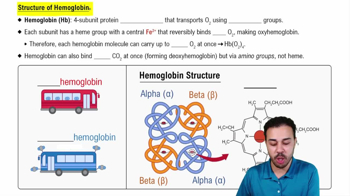Blood temperature is approximately ___, and blood pH averages ___.
(a) 36 °C, 7.0
(b) 39 °C, 7.8
(c) 38 °C, 7.4
(d) 37 °C, 7.0
 Verified step by step guidance
Verified step by step guidance Verified video answer for a similar problem:
Verified video answer for a similar problem:



 6:11m
6:11mMaster Functions of Blood with a bite sized video explanation from Bruce Bryan
Start learning